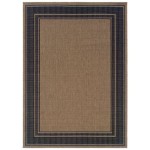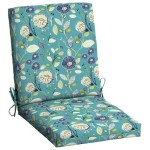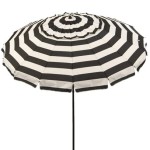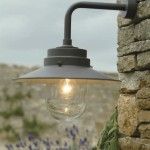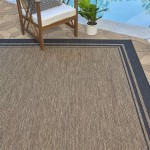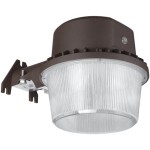What Type of Outdoor Furniture is the Most Durable?
Selecting outdoor furniture requires careful consideration, particularly if longevity and resilience are paramount. The outdoor environment presents a multitude of challenges, including exposure to sunlight, rain, wind, and temperature fluctuations. Consequently, the inherent durability of the materials used in construction significantly impacts the lifespan and overall value of outdoor furniture. While aesthetics and comfort are undoubtedly important, understanding which materials stand up best to the elements is crucial for making a sound investment.
Durability in outdoor furniture encompasses several key factors: resistance to weather-related damage, resistance to pests and rot, and the ability to withstand regular use without significant wear and tear. Different materials exhibit varying degrees of proficiency in these areas, leading to a diverse range of options with correspondingly different price points.
The ideal choice for durable outdoor furniture depends on specific climate conditions, intended usage, and individual budget considerations. However, certain materials consistently demonstrate superior performance in resisting the effects of the outdoors, making them reliable choices for long-lasting furniture.
Teak: The Gold Standard for Outdoor Durability
Teak is widely recognized as one of the most durable and weather-resistant materials for outdoor furniture. This hardwood's exceptional properties are due to its high oil content and dense grain. These natural oils act as a protective barrier against moisture, preventing rot and decay even in humid conditions. Furthermore, the oils deter insects and pests, minimizing the risk of infestation that can compromise the structural integrity of the furniture.
The density of teak wood contributes to its strength and stability. It can withstand significant weight and resist warping or cracking when exposed to temperature changes. While teak furniture may initially have a warm, golden-brown color, it naturally weathers to a beautiful silver-gray patina over time. This aging process does not affect the wood's durability and adds to its aesthetic appeal.
Maintenance requirements for teak are relatively low. Regular cleaning with mild soap and water helps to remove dirt and debris. Applying a teak sealant can slow the weathering process and preserve the original color, but it is not strictly necessary for maintaining the furniture's structural integrity. Over time, small cracks may appear in the surface of the wood; however, these are a normal occurrence and do not affect the furniture's strength.
The primary drawback of teak is its cost. As a premium hardwood, it is significantly more expensive than other options. However, its long lifespan and minimal maintenance requirements often make it a worthwhile investment in the long run, especially for those who prioritize durability and aesthetic appeal.
Aluminum: Lightweight Strength and Corrosion Resistance
Aluminum is another popular choice for durable outdoor furniture, particularly powder-coated aluminum. Aluminum is naturally resistant to rust and corrosion, making it well-suited for outdoor environments. Powder coating adds an extra layer of protection against scratches, fading, and chipping, further enhancing its durability.
One of the key advantages of aluminum furniture is its lightweight nature. This makes it easy to move and rearrange as needed. Despite its light weight, aluminum is also surprisingly strong and can withstand considerable weight. It is also resistant to temperature extremes, remaining comfortable to the touch even in hot or cold weather.
Aluminum furniture requires minimal maintenance. Regular cleaning with soap and water is typically sufficient to keep it looking its best. Scratches or chips in the powder coating can be repaired with touch-up paint to prevent corrosion. Unlike some other materials, aluminum does not require sealing or staining.
While aluminum is generally durable, it can be susceptible to dents if subjected to significant impact. The quality of the aluminum and the powder coating also play a role in its longevity. Thicker gauge aluminum and high-quality powder coating will provide greater resistance to damage.
Cost-wise, aluminum furniture tends to be more affordable than teak but more expensive than some other options like plastic. Its combination of durability, lightweight design, and low maintenance make it a popular choice for a wide range of outdoor settings.
Wrought Iron: Heavy-Duty Durability for Lasting Use
Wrought iron furniture is known for its robust construction and classic aesthetic. The term "wrought iron" refers to iron that has been heated and worked with tools, resulting in a strong and durable material. While true wrought iron is relatively rare today, the term is often used to describe furniture made from similar types of iron.
Wrought iron furniture is incredibly heavy, making it exceptionally stable and resistant to wind. This makes it an excellent choice for exposed areas where lighter furniture might be easily blown around. The weight also contributes to its overall durability, as it is less likely to be damaged by accidental bumps or knocks.
To prevent rust, wrought iron furniture typically undergoes a protective coating process, such as powder coating or painting. Regular maintenance is essential to preserve this protective layer. Any scratches or chips should be promptly repaired to prevent rust from forming. Applying a rust-inhibiting primer and paint can help to extend the lifespan of wrought iron furniture.
While wrought iron is exceptionally strong, it can be susceptible to rust if the protective coating is compromised. In coastal areas with high salt content in the air, more frequent maintenance may be required to prevent corrosion. The weight of wrought iron furniture can also be a drawback, making it difficult to move and rearrange.
Wrought iron furniture typically requires cushions for comfort, which adds to the overall cost. The style of wrought iron furniture tends to be more traditional, which may not appeal to everyone. However, its exceptional durability and timeless aesthetic make it a worthwhile investment for those who appreciate its classic appeal.
Resin Wicker: A Cost-Effective and Weather-Resistant Option
Resin wicker, also known as synthetic wicker or all-weather wicker, is a popular and increasingly durable option for outdoor furniture. It is made from synthetic fibers, typically polyethylene or polyvinyl chloride (PVC), that are woven to mimic the appearance of natural wicker. Unlike natural wicker, resin wicker is highly resistant to moisture, fading, and cracking.
The synthetic fibers used in resin wicker are designed to withstand the rigors of outdoor use. They are resistant to UV radiation, which prevents fading and degradation from sunlight exposure. They are also waterproof, making them ideal for use in rainy climates or around pools and spas. Resin wicker is also resistant to insects and pests, eliminating the risk of infestation.
Resin wicker furniture is typically constructed with a powder-coated aluminum frame, which provides strength and stability while remaining lightweight and rust-resistant. This combination of materials results in furniture that is both durable and easy to move.
Maintenance requirements for resin wicker furniture are minimal. Regular cleaning with soap and water is usually sufficient to keep it looking its best. More stubborn stains can be removed with a mild detergent. Unlike natural wicker, resin wicker does not require sealing or staining.
The quality of resin wicker can vary depending on the type of synthetic fibers used and the weaving technique. High-quality resin wicker will be more resistant to stretching, sagging, and cracking. It is also important to choose furniture with a sturdy frame and well-constructed joints.
Resin wicker furniture is generally more affordable than teak or wrought iron but more expensive than plastic. Its combination of durability, weather resistance, and affordability make it a popular choice for a wide range of outdoor settings. Its light weight also adds to it's versatility.
Plastic: An Economical Yet Less Durable Choice
Plastic outdoor furniture, often made from polypropylene or polyethylene, represents the most budget-friendly option. While it may not possess the same level of durability as the materials discussed above, improvements in plastic manufacturing have resulted in more resilient products than were available in the past. However, it’s important to acknowledge that plastic furniture inherently lacks the longevity and structural integrity of teak, aluminum, or wrought iron.
The primary advantage of plastic furniture lies in its cost-effectiveness and resistance to moisture. It will not rust, rot, or succumb to insect infestations. It's lightweight, making it exceptionally easy to move and store. This can be crucial for seasonal storage or frequent rearrangement of outdoor spaces.
However, plastic is susceptible to degradation from prolonged UV exposure, leading to fading, cracking, and brittleness. Cheaper plastics are particularly prone to these issues. The color can fade noticeably after even a single summer in direct sunlight. Furthermore, plastic is not as strong as other materials and may be damaged by heavy loads or impacts.
Maintenance for plastic furniture is straightforward, typically involving cleaning with soap and water. However, scratches and stains are difficult to remove, and once the plastic begins to degrade, it's virtually impossible to restore it to its original condition. While some plastic furniture is recyclable, the recycling rate for outdoor furniture is relatively low, contributing to environmental concerns.
Considerations for plastic furniture should be closely aligned with its limitations. It is better suited for temporary outdoor setups, covered patios, or situations where budget constraints are paramount. Proper storage during the off-season can significantly extend its lifespan. Investing in higher-quality, UV-resistant plastic can also improve its durability, although it will still not match the performance of other materials.

Pros And Cons Of 3 Kinds The Most Durable Outdoor Furniture Lagoon Design

The 7 Most Durable Outdoor Furniture Frames Elegance Patio Design Center

Pros And Cons Of 3 Kinds The Most Durable Outdoor Furniture Lagoon Design

The Best Weather Proof Garden Furniture

What Type Of Outdoor Furniture Is The Most Durable

2024 Best Material For Outdoor Furniture Fabric Patio Homeadvisor

The Ultimate Aluminum Outdoor Furniture Buyer S Guide

Patio Furniture Buying Guide The Home

The Best Materials For Your Patio Furniture

What Is The Best Material For Outdoor Furniture Amish Outlet Store

